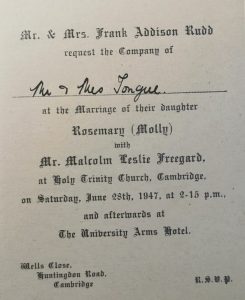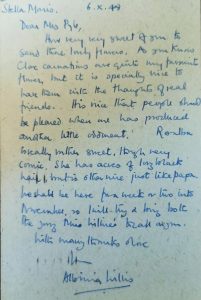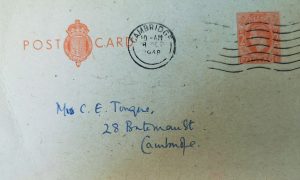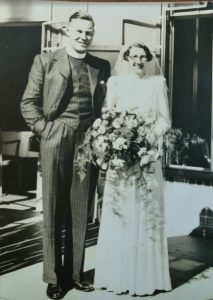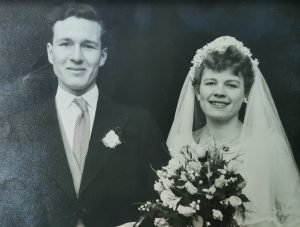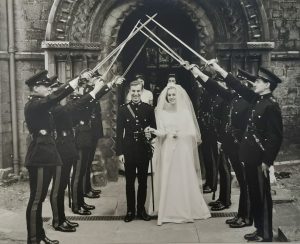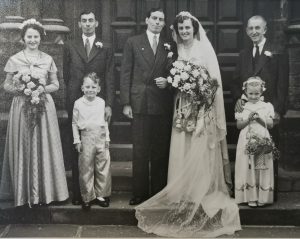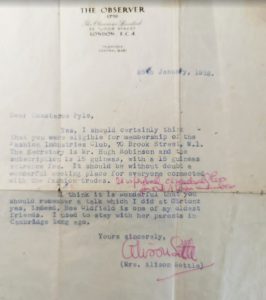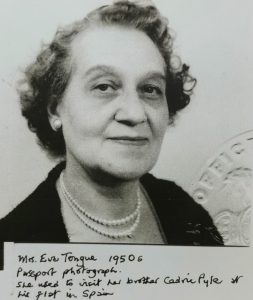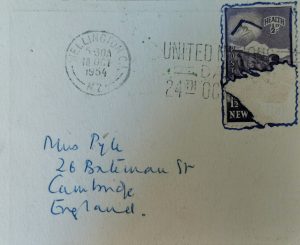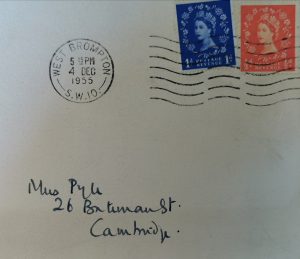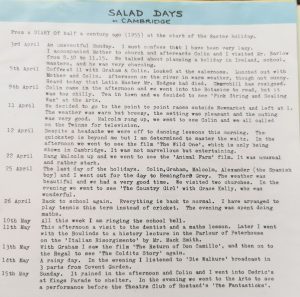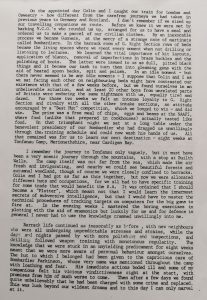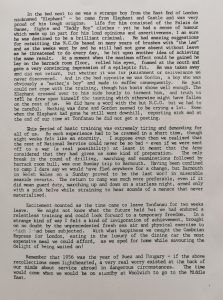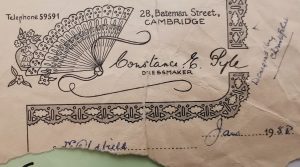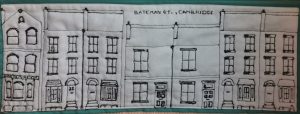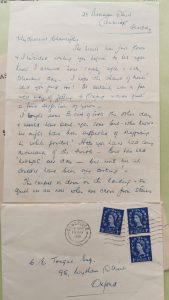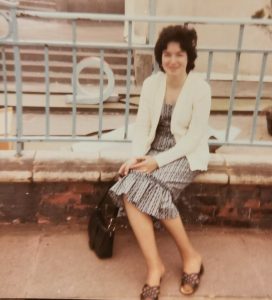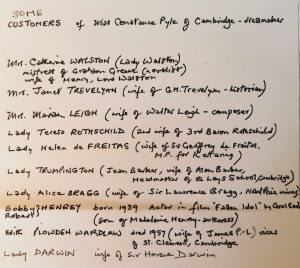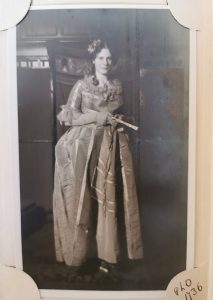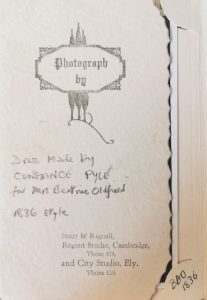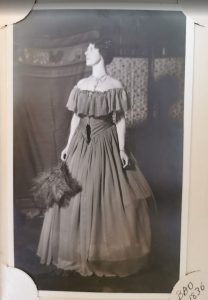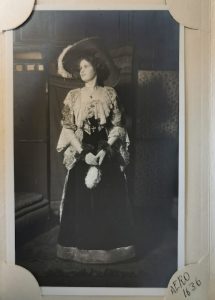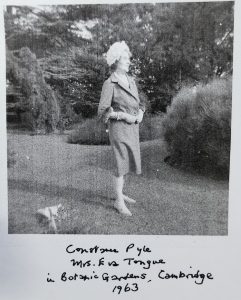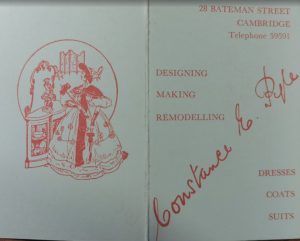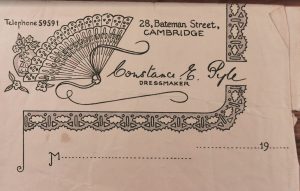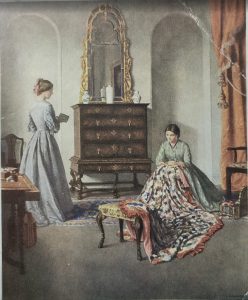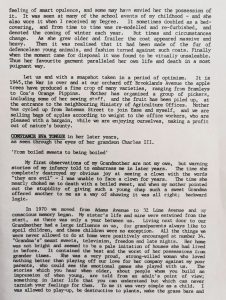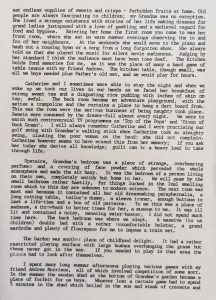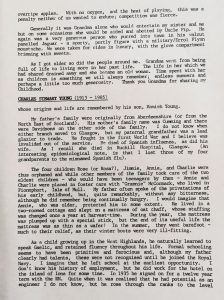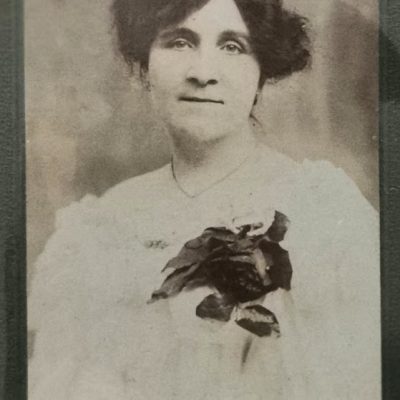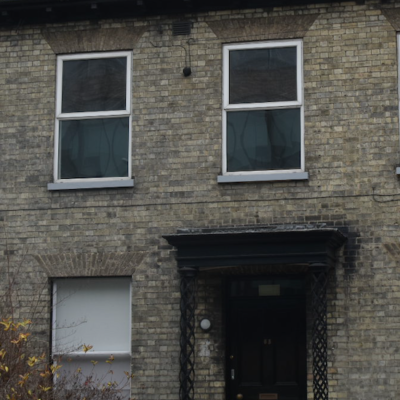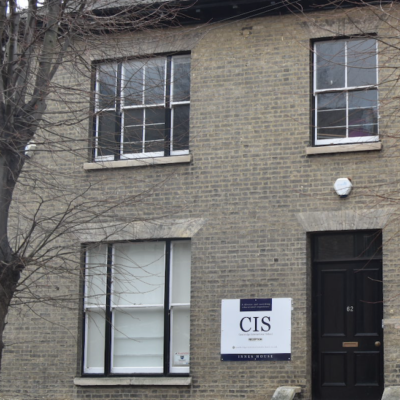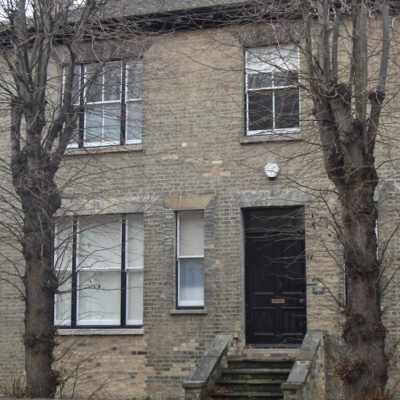Search by topic
- archaeology
- Building of Local Interest
- chapel
- charity
- church
- crime
- dressmaker
- fire
- Great Eastern Railway
- Listed building
- Mapping Relief
- medieval
- oral history
- poverty
- Public House
- Religious House
- Roman
- scholar
- school
- Then and Now
- tudor
- women
- work
- world war one
- world war two
Search by text
 27-28 Bateman Street
27-28 Bateman Street28 Bateman Street
History of 28 Bateman Street
1872
Trinity Hall lease to William Clayton
1874
J S Sprowl, Superintendant District G E R
1901
Alfred Bartlett, 42, inspector of schools, b Cornwall
Alfred C, 18, articled to ? and undergraduate of Cambridge, b Whittlesford
Beatrice, 12, b Cambridge
Florence M A Porter, 39, servant, b Cambridge
1911
Florence Kate Newman, 45, widow, boarding house keeper, b Bourn
Olive Mary, 15, b Bourn
Joseph Pashler, 11, b Hunts
Florence Dinah, 8, b Hunts
Marguerite Alice Buchan, boarder, 24, b London
Robert Whitson Telford, boarder, 39, medical practitioner, b Victoria Australia
Kenneth Francis Mulligan, boarder, 24, medical practitioner, b Wales
Alice Webb, servant, 42, b Bottisham
1913
Mrs J H Newman
1930
Letter to Constance Pyle from Beatrix Oldfield
1945
Constance Pyle moved her business here from 6 Hills Road in 1945. The business operated until 1967.
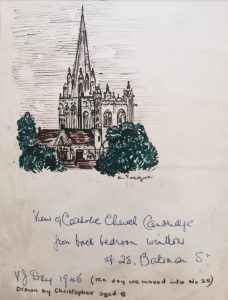
View of Catholic Church from back bedroom window of 28 Bateman Street, drawn on VJ 1945, day of moving in, by Christopher Tongue age 8.
1948
Christopher Tongue, memories of Boys High School
1952
1954
Passport photo; she used to visit her brother Cedric Pyle at his flat in Spain.
1956
1958
Leased to C E Tongue
1960 & 1962:
Claud Ellis Tongue
Miss Constance Eva Pyle, dressmaker
In 1939 Claude & Eva had been living at 6 Hills Road.
Constance Pyle, as a ‘court dressmaker’ with two assistants, had her busiest time of year making ball gowns for the May Balls. Many fittings were entailed as the ladies sought to impress their boy friends. She also made dresses for Mrs Janet Trevelyan, wife of G M Trevelyan. She as a writer, social campaigner and fundraiser. (courtesy Christopher Tongue)
Ena Cracknell worked for Constance Pyle from April 1957 to March 1963. Moyra Bailey was also a dressmaking assistant from Aug 1958 to Sept 1964.
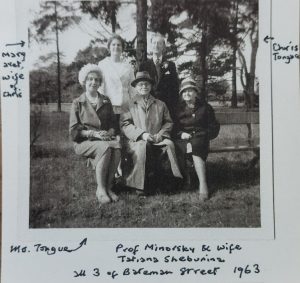
Margaret and Chris Tongue (rear), Mrs Tongue, Professor Minorsky and wife Tatiana Sheburina, all of Bateman Street, 1963
Constance Pyle’s business stationary
1974
Mrs Oldfield has died. I go to her memorial service at St Benet’s Church on Wednesday. My friendship with her is full of happy memories. I made all her dresses from the time I was 18 years old including her dress and her daughters’ when they were presented at court, and their wedding gowns. She came to me with love and sympathy in times of trouble and joy. God bless her.
Christopher Tongue’s family history continues [previous] : A few minutes walk from Cambridge railway station and from the University Botanical Gardens no.28 was a tall, grey brick terraced house consisting of a basement, approached by area steps, and three upper floors each with two large high-ceilinged rooms on each floor. The front door to the first floor was reached by a flight of steps and off the hall lay the fitting room with workroom next door. the next floor consisted of a bedroom, and a spacious lounge with fitted shelves either side of the fireplace. On the top floor were two bedrooms and a bathroom. On the outbreak of war the sole occupant had been a German architect, whose collection of Bauhaus-inspired magazines lay in profusion all over the floor on one room. It is not known whether he had been interned or had fled back to Germany, but the house had lain in suspended animation for five years. Consequently there was much re-decoration and work to do on the building, but eventually it became a much loved home of many memories.
On the day that she moved into the new house the mayor of Cambridge, Lady Bragg, sent her her mayoral bouquet – the kind of clientele which she now enjoyed included Lady Rothschild, Mrs George Trevelyan, Lady Jeffreys, Mrs Barker (later Baroness Trumpington), Lady Walston and the wives of many a professor. Mrs Oldfield retained her services for thirty years, and all these worthies insisted on personal fittings and treated the occasions as visits to the confessional. While her work force changed over the years from ten girls to two the demand for new dresses and for alterations never really slackened until the 1960s. Trading ended formally two years after the death of Claude. While Eva was living alone in Cambridge a fire in the basement was only averted by the prompt action of a neighbour, after which Eva decided to move to Northampton, where she bought a semi-detached house in Lime Avenue, close to a group of shops and also near the beautiful Abington Park.
Reminiscences of Constance Eva by her grandson, Charles.
Contribute
Do you have any information about the people or places in this article? If so, then please let us know using the Contact page or by emailing capturingcambridge@
License
This work is licensed under CC BY-NC-SA 4.0






